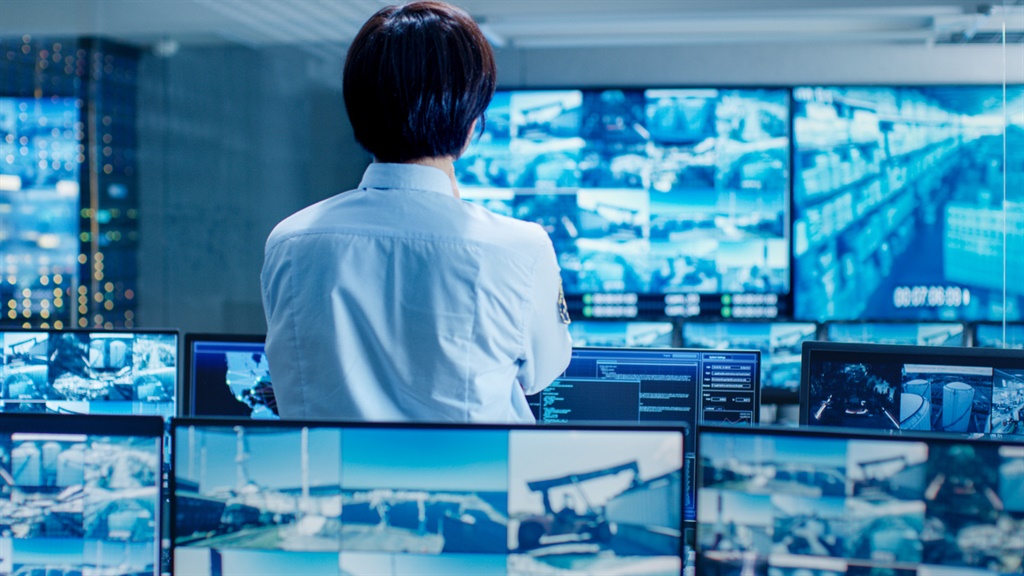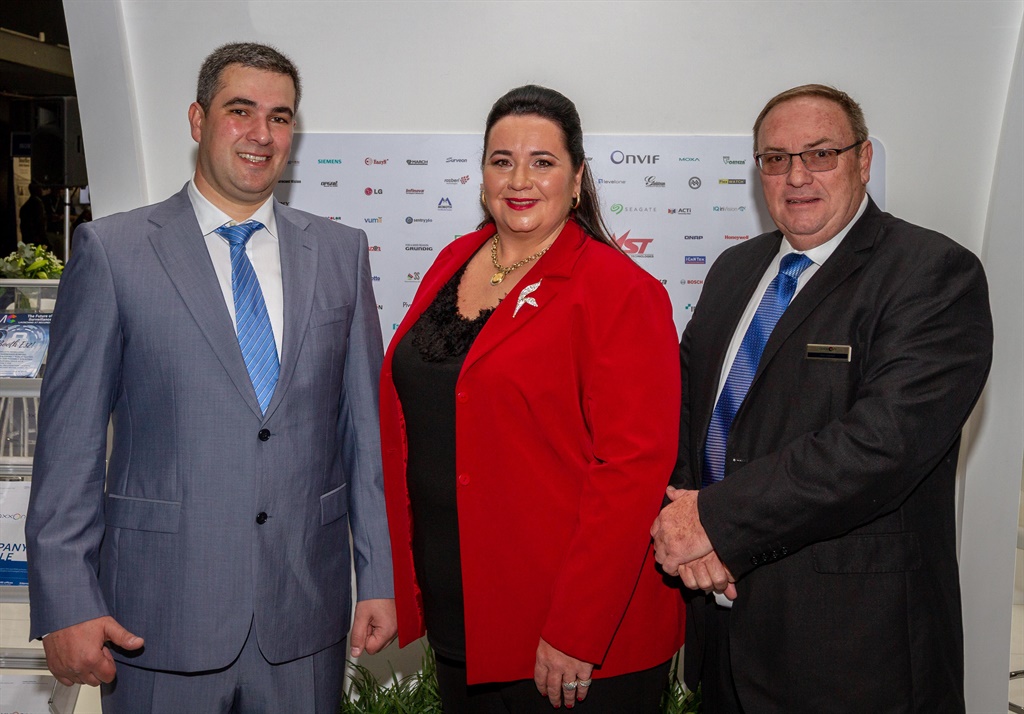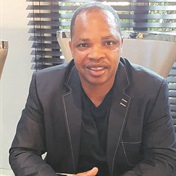
We’ve all seen some sort of CCTV footage where something dramatic and usually criminal happens: a hijacking, a robbery, a cash in transit heist or even an ATM being blown up. Now what if those incidents were detected in real-time, with a message sent immediately to the relevant authorities detailing what is taking place, where it is taking place, how many people are there and even who they are?
“It’s our way of starting a safe city project in South Africa,” says Lady Colleen Glaeser, managing director of AxxonSoft Southern Africa, the company behind this new surveillance technology that has hit the tip of Africa.
“In conjunction with the private sector we’ve brought this massive, massive surveillance centre. We built it, designed it all with AxxonSoft’s technology behind it, and now anyone with a stable internet connection can dial into the management centre.”
The Incident Management Centre, as it is officially known, is located in Pretoria. Listening to Glaeser describe it, one is reminded of those scenes in movies where the good guys are looking for the bad guys and they go to a surveillance centre where there are something like 50 screens on one wall with CCTV footage of every camera in the city.
“It looks a bit like Nasa,” Glaeser says with a knowing smile.
The idea is that any camera with an internet connection sends its video feed to the IMC where the technology is housed. This footage is then analysed by the IMC’s algorithm using artificial intelligence and deep learning to detect any potential risks in real-time and alert either the client, its security company, the police or all three.
The IMC consists of three main features: facial recognition, license plate recognition and retail point of sale analysis.
Face recognition evolves with AI
The most interesting, and at times scary, one of the three is the facial recognition which the company says is cutting edge and “ahead of the market”.
“If we had a facial recognition camera [with the tech] here and you walked past, whether you have a cap on or sunglasses it’ll grab you,” says Glaeser.
The uniqueness of the technology is underscored by the investment the company made into a Russian scientific institute, which was commissioned to “develop facial recognition engine based on neural networks.”
Yury Akhmetov, AxxonSoft’s business development director, explained that classical facial recognition is based on biometrical reference points like distance between your eyes, the length of your nose and the size of your eyes.
“What neural networks do is so-called deep learning and artificial intelligence, basically the same technology. So [by] providing millions of photos the system learns and with no connection to the race, the skin-colour and so on, the computer starts understanding whether it is the same person or not.
“Of course, if you put some biometrical points in it, it works even better ... and to improve the system, you just have to send more photos so it can learn.”
In essence if someone was convicted or wanted for a crime and their photo was loaded on to the IMC, and they walk past an IMC integrated camera the system will pick it up and an alert will be sent to the relevant persons to inform them where this person is.
Another interesting feature that facial recognition systems have struggled with previously has been the detection of different ethnicities and facial hair, however due to the machine-learning aspect of the AxxonSoft technology this has been mitigated.
The system can also be used as to search for people, determine their age and gender as well as produce a head count.
Glaser said that this is perfect for malls especially if a child goes missing or gets lost.
“With Axxon we can search by colour, we can search by her size and by where she was seen last and switch all the cameras to a forensics search and we can lock her down.”
The search can also be done on an offline system. So say there is recorded video footage that was never integrated with the IMC, if it is later added to the IMC this footage will then be able to search by metadata points.
Oh and just to keep things a little safer, the neural networks can also detect smoke and fire from the video footage.
As much as the facial recognition technology is potentially industry disruptive, there are a few kinks that could be worked out. One such was the licence plate recognition which Akhmetov said was not as accurate as it could be but due to the machine learning technology it is rapidly coming up to the same level as the facial recognition. One other feature that the company wants to develop more on is the audio detection side. Currently a third-party software is used, where required, to detect gunshots and car alarms and even screaming.
Big Brother is watching anyway
Despite the power for good a system like this can do, the potential for abuse is quite plain to see. Imagine where ever you go from your home to work to a restaurant to the gym, you could be traceable. You can be tracked down in seconds and every move you make and every person you meet can potentially be recorded. When asked if this will not create a police state with Big Brother acting as the all-seeing eye, Glaser didn’t think it would be that bad after all “Big Brother is already watching so why not use it to keep you safe”.
Both Glaser and Akhmetov also emphasised that the technology is GDPR and PoPI compliant after having consulted extensively with lawyers and legal experts. The General Data Protection Regulation (which went into effect on Friday) is a European Union legislation aimed at data protection and privacy for all EU individuals. The Protection of Personal Information Act is South Africa’s version of the GDPR in that it protects people’s personal information like their identity and privacy, but this has not officially come into effect yet.
Government looking into future, at what cost?
If the company is compliant with legislation and is confident that it has a great service in helping make South Africa safer, then why not sell it to government first?
“Absolutely, we want government to be involved we need their buy-in, but I think there are so many people who say what they can do without actually doing it. So it was a case of let’s put up the money and invest in this facility that people can come and look at,” Glaeser said, adding that despite the scepticism a lot of people have already started speaking to government about them.
“We deal with distributers and partners so a lot of our partners are speaking to government. In fact at the launch today we had the [South African Police Service] here and we are working closely with them.”
With a lot of state officials contemplating boosting their security measures with technological advancements, this automated monitoring system could become quite the wave.
City of Johannesburg mayor Herman Mashaba, in his state of the city address, said that “intelligent policing initiatives must see massive rollout of CCTV camera networks being monitored in our operations centre, and the use of gunshot fire technology must augment our police force in responding to crime scenes faster.”
Police Commissioner Khehla Sitole said on Wednesday a day after the AxxonSoft launch, that “currently, we are working on a project on the installation of CCTV cameras, which will be done by or before the end of June”.
Whether or not these CCTV rollouts will have an analytics system backing them, eventually the move to intelligence and AI for “smart” policing will be on the cards. And when that happens Glaeser and her team will be ready.
“If the government has to come to us now and say we need help with X, Y and Z and they have about 200 cameras there, we will assist,” she says, but emphasises that they are only targeting the private sector for now. Although the company does have 150 safe city projects under their belt, the most prominent of which are Moscow, Russia and Sharjah, United Arab Emirates.
The technology is quite exciting and the applications for it in sectors other than the security one could potentially change the game. However, the concerning aspect of privacy and data breaches could lead the country down a slippery slope. But maybe in the name of security it is all worth it?
Glaser says her dream for South Africa is simple: “I want to reclaim the streets.”
Imagine a system that no longer needs a security guard. A platform that integrates all your security and business systems. A system that's intelligent enough to interpret and enforce fast, automatic actions when necessary.
— IMC by AxxonSoft (@IMCbyAxxonSoft) May 9, 2018
Stop Imagining...The time is now!@SecurexSA 22 -24 May pic.twitter.com/Cibrmz5hGH




 Publications
Publications
 Partners
Partners










